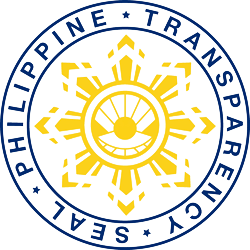 |
| Top economic officials from ASEAN and the region’s trade partners gathered at the 5th Ministerial Meeting of the Regional Comprehensive Economic Partnership (RCEP) on 10 September in Pasay City. |
Following the Philippine hosting of the 5th Ministerial Meeting on the Regional Comprehensive Economic Partnership (RCEP) agreement on 10 September, as part of the 49th ASEAN Economic Ministers’ (AEM) Meeting and Related Meetings, ASEAN economic ministers expressed strong commitment to take a more pragmatic and realistic approach to conclude the 16-party agreement.
The Department of Trade and Industry (DTI), the lead agency for the AEM Meetings reported that as part of the approach to conclude RCEP, ASEAN economic ministers instructed negotiating leads and teams to recalibrate long-held negotiating stances and positions, to arrive at an acceptable ‘landing zone’, and not hinder negotiation progress.
Top economic officials of the 10 ASEAN Member States and ASEAN FTA Partners— Australia, China, India, Japan, Korea, and New Zealand—discussed the way forward for the earnest conclusion of RCEP negotiations. The recent RCEP ministerial meeting enabled clear takeaways as Ministers mapped out the way forward in further progressing market access and text based negotiations on the core negotiating areas embodied in RCEP.
With this guidance received from the ministers, the Incheon Round in October 2017 will be deemed important in defining the future course of the negotiations and steer it to a close. Two chapters have been concluded thus far, including the Chapters on Economic and Technical Cooperation, and Small and Medium Enterprises that underscore RCEP’s development dimension.
“The RCEP has entered a critical phase and, as in any negotiations there are familiar challenges arising from multiple parties with differing stages of development and varying interests,” said DTI Secretary and 2017 AEM Chair Ramon Lopez.
ASEAN has exhibited its strong leadership in managing the RCEP process. The “RCEP Key Elements for Significant Outcomes by End of 2017” welcomed by the Ministers provides the emerging architecture of the RCEP, which will define the FTA’s final shape and form.
The Philippine trade chief added that the country recognizes the difficulties in reconciling differing and even opposing interests and views in an effort to achieve balance between the interests of the developed, developing and least developed economies and addressing these in the most equitable manner.
“More trade and investment as a result of RCEP will engender a more competitive market, generate jobs, and inject capital. These positive outcomes will contribute to the Philippine economic development goals,” added Sec. Lopez.
Given the expectation that RCEP could provide fresh energy to global free trade and open markets, all eyes are on RCEP and how it will set the example for the pursuit of free and open trade.
RCEP represents integrated market of more than three billion people with a combined GDP of US$ 22.4 trillion and one of the world’s largest free trade area accounting for 28.3% of global goods imports and 29.7% of global goods exports, 27.8% of global inward foreign direct investment (FDI) stocks and 24.6% of global outward FDI stocks, and 17.2% of global services imports and 25.4% of global services exports.
Against the backdrop of growing protectionism and anti-globalization sentiments across the globe, ASEAN remains resilient and dynamic in forging ahead with regional economic integration that is a key facet of the ASEAN Economic Community (AEC), demonstrating both the centrality and leadership of ASEAN.
“RCEP is seen as the next logical step in ASEAN’s regional integration, by bringing it and its partner economies under a single, ambitious, high quality trade agreement, which would further reinforce the Southeast Asia region as the economic center of gravity,” said Sec. Lopez.
“The importance of RCEP to the respective economies of each ASEAN Member State cannot be over-emphasized, not just in terms of the benefits that are expected to accrue to our individual economies but also on our collective posturing as an open and outward-oriented regional trade bloc,” concluded Sec. Lopez.



